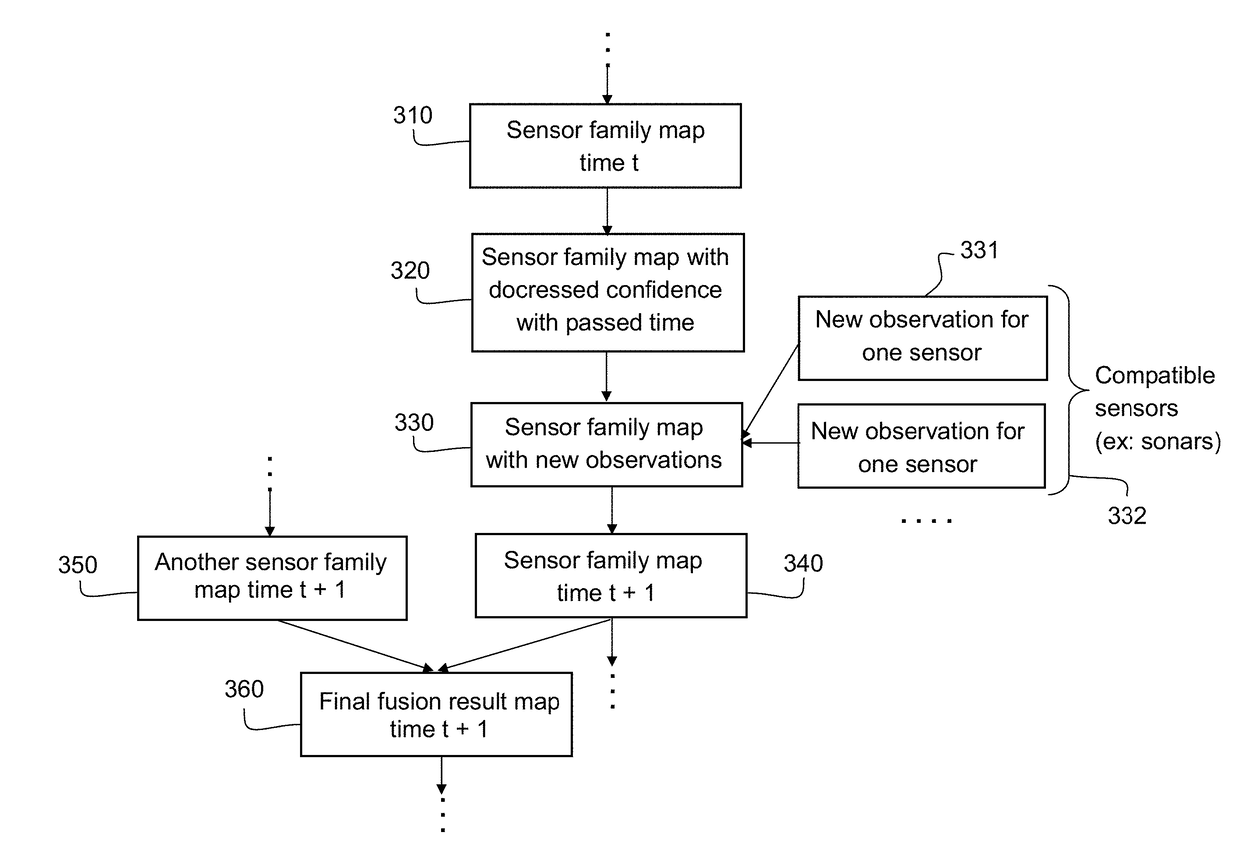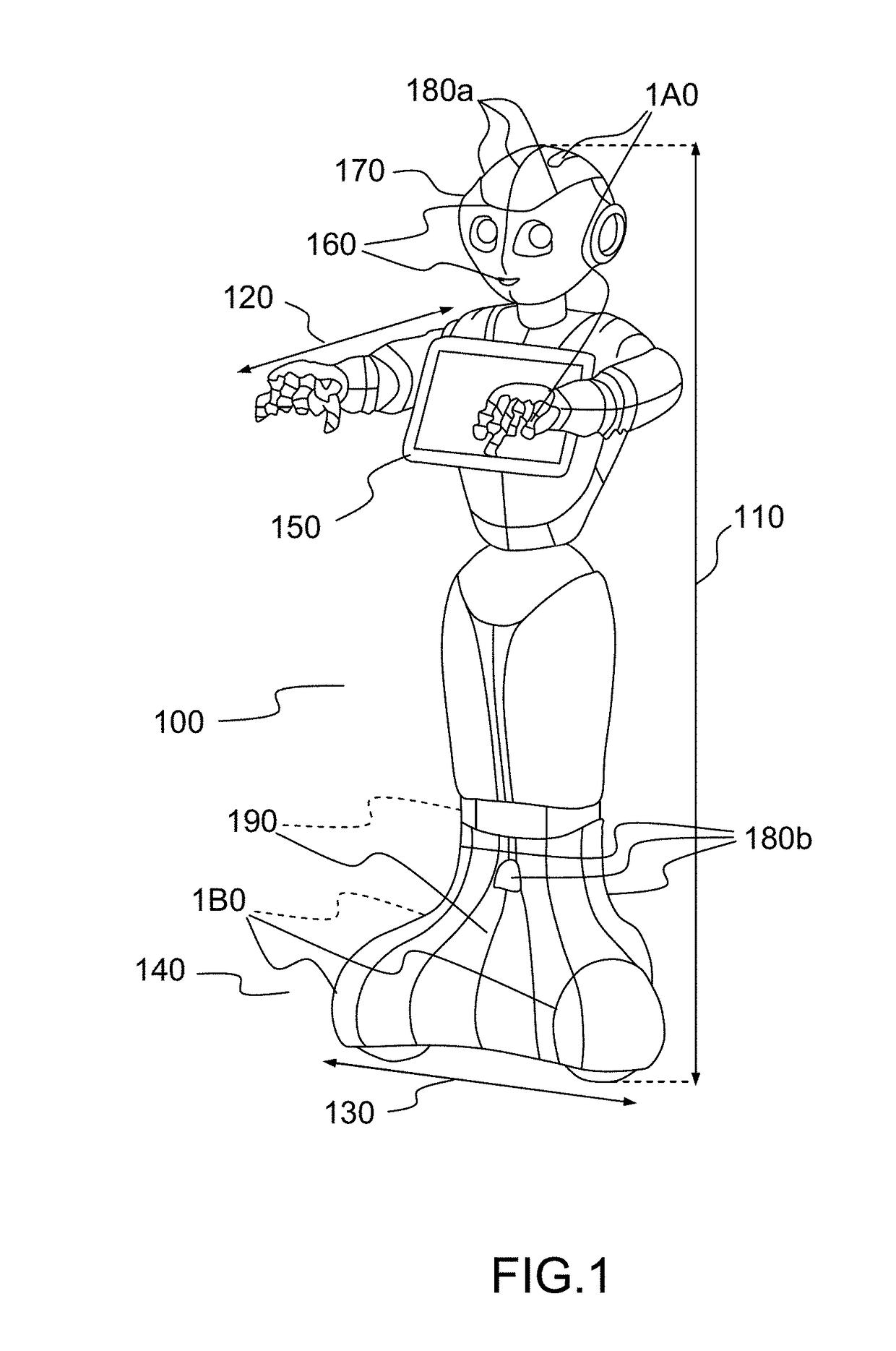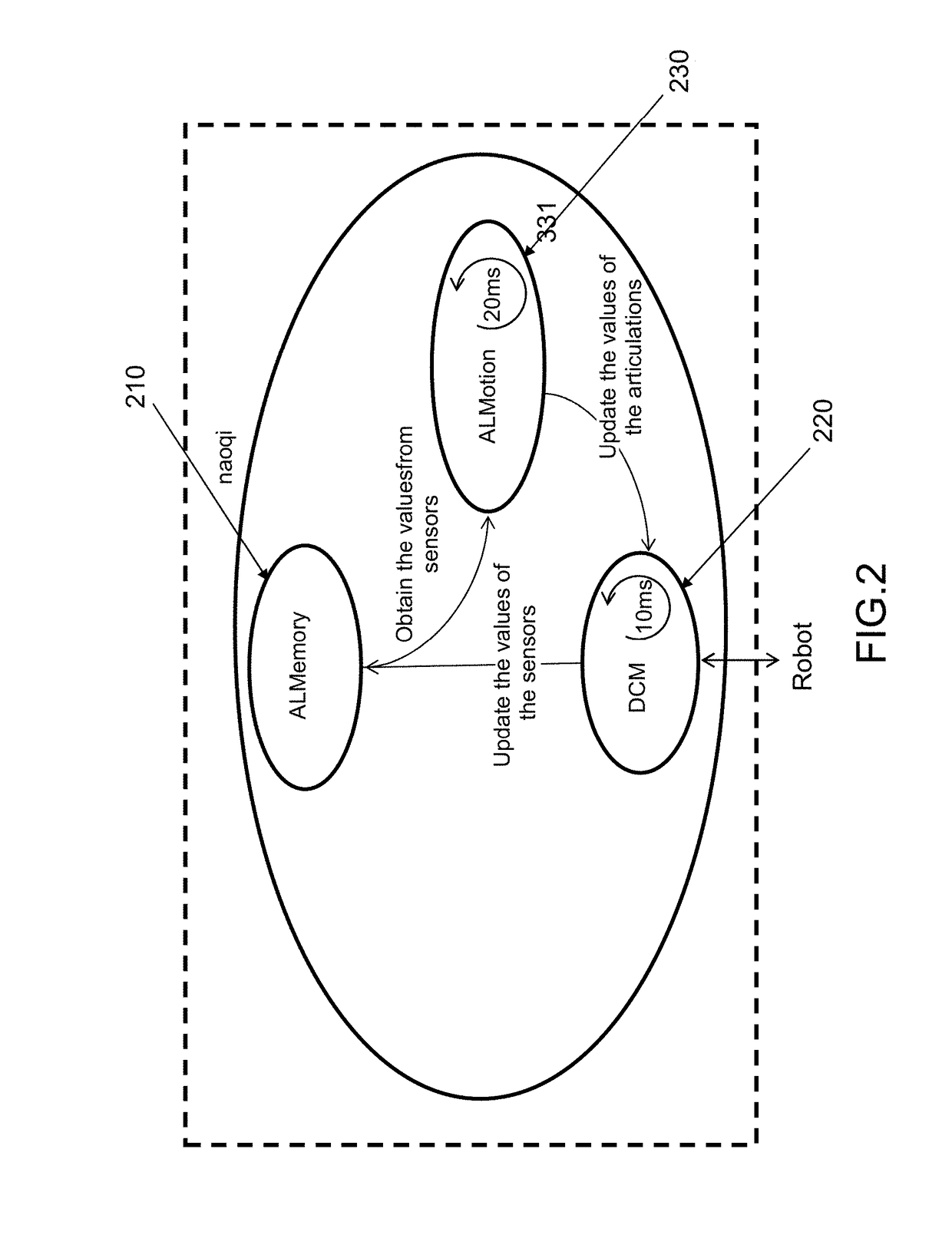Method for building a map of probability of one of absence and presence of obstacles for an autonomous robot
a robot and probability technology, applied in the field of robot programming systems, can solve the problems of high cpu consumption of interactions, humanoid robots may be more or less sophisticated, and autonomously collecting information about local obstacles, so as to save cpu
- Summary
- Abstract
- Description
- Claims
- Application Information
AI Technical Summary
Benefits of technology
Problems solved by technology
Method used
Image
Examples
Embodiment Construction
[0045]FIG. 1 displays a physical architecture of a humanoid robot in a number of embodiments of the invention.
[0046]The specific robot 100 on the figure is taken as an example only of a humanoid robot in which the invention can be implemented. The lower limb of the robot on the figure is not functional for walking, but can move in any direction on its base 140 which rolls on the surface on which it lays. The invention can be easily implemented in a robot which is fit for walking as, for example, the Nao™ robot. By way of example, this robot has a height 110 which can be around 120 cm, a depth 120 around 65 cm and a width 130 around 40 cm. In a specific embodiment, the robot of the invention has a tablet 150 with which it can communicate messages (audio, video, web pages) to its environment, or receive entries from users through the tactile interface of the tablet. In addition to the processor of the tablet, the robot of the invention also uses the processor of its own motherboard, w...
PUM
 Login to View More
Login to View More Abstract
Description
Claims
Application Information
 Login to View More
Login to View More - R&D
- Intellectual Property
- Life Sciences
- Materials
- Tech Scout
- Unparalleled Data Quality
- Higher Quality Content
- 60% Fewer Hallucinations
Browse by: Latest US Patents, China's latest patents, Technical Efficacy Thesaurus, Application Domain, Technology Topic, Popular Technical Reports.
© 2025 PatSnap. All rights reserved.Legal|Privacy policy|Modern Slavery Act Transparency Statement|Sitemap|About US| Contact US: help@patsnap.com



